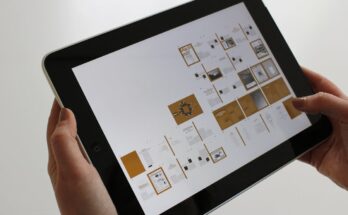Hey there! Ever feel like technology is moving at warp speed and you’re just trying to keep up? You hear terms like “IoT” thrown around, and maybe you think of a smart speaker or a doorbell camera, but you sense there’s way more going on under the hood. It feels like everyone’s talking about these connected devices changing the world, and you don’t want to miss out or be left behind. You want to understand what’s really happening with all this smart stuff and how it might actually matter to you, whether it’s making your life easier, your city smoother, or even your job smarter. This article’s gonna pull back the curtain on some of the coolest IoT innovations popping up right now, showing you what they are and why they’re kind of a big deal. By the time you’re done, you’ll have a much clearer picture of this connected future and feel a lot more in the know.
Your Home Just Got Way Smarter (Or Will Soon)
Okay, let’s start where most of us see IoT in action: our homes. Forget just smart lights or thermostats you can control with your phone. Things are getting seriously integrated.
Think about this:
Your house knowing when you’re leaving and automatically locking doors, turning off lights, and adjusting the temperature. Or, imagine your fridge actually telling you when you’re low on milk and adding it to your shopping list automatically. That’s happening!
It’s not just about convenience, either. Smart home tech is getting really good at helping with safety and saving energy. Sensors can detect water leaks before they become a flood or alert you to weird noises when you’re away. It’s like your house is starting to look after itself, and you.
Cities Getting a Digital Brain
Now, let’s step outside the front door and look at the bigger picture – our cities. IoT is playing a massive role in making urban life smoother, safer, and less frustrating.
Picture this totally made-up scenario: Your friend, Alex, is driving downtown for a concert. Usually, finding parking is a nightmare. But in this new “smart city,” sensors in parking spots tell an app exactly which spots are free. Alex pulls up, sees an available spot nearby on the app, and grabs it without circling blocks endlessly. Meanwhile, traffic lights are talking to each other and to cars, adjusting timing based on real-time traffic flow, helping everyone get where they’re going faster.
This isn’t sci-fi anymore. Cities are using IoT for everything from managing waste pickup more efficiently (bins signal when they’re full) to monitoring air quality and even managing public transportation better. It’s all about using data from connected sensors to make the city work smarter for everyone living in it.
Making Businesses and Factories Super Efficient
IoT isn’t just for homes and cities; it’s revolutionizing how businesses, especially factories and industrial places, operate. This is often called the Industrial Internet of Things (IIoT).
Think about a factory… maybe one that makes those cool gadgets you love. Instead of waiting for a machine to break down unexpectedly (which costs a ton of money and time!), sensors attached to the machines constantly monitor their performance – temperature, vibration, noise, you name it. These sensors can spot tiny issues *before* they cause a major failure.
Let’s imagine a specific machine, say, a robotic arm on an assembly line. If its motor starts vibrating a little more than usual, the sensors notice. The system can then alert maintenance that this arm might need service soon, *before* it stops working completely. This predictive maintenance saves companies huge amounts of money and keeps things running smoothly. It’s pretty smart stuff that helps businesses churn out products more reliably.
Staying Healthy with Wearable Tech and Remote Monitoring
IoT is also stepping into the world of health and wellness in some really significant ways, and it’s way beyond just your fitness tracker counting steps.
Consider your Uncle Joe, who has a heart condition. Instead of just going to the doctor occasionally, he might wear a small, comfy device that constantly monitors his heart rate, blood pressure, and activity levels. This data is sent securely to his doctor in real-time. If something looks off, the doctor gets an alert and can check in with Uncle Joe immediately. This means potential problems can be caught much earlier, maybe even preventing an emergency.
This kind of remote patient monitoring is a huge deal, especially for older folks or those with chronic conditions. It helps people live more independently and gives doctors better insights into their patients’ health day-to-day, not just during a short office visit. Plus, innovations in wearable medical sensors are only getting more sophisticated and less intrusive.
The Unseen Tech Powering It All: Edge Computing
So, all this smart stuff – homes, cities, factories, health gadgets – generates mountains of data. Sending *all* of that data back to some far-away cloud server for processing can take too long, especially for things that need an immediate response, like a self-driving car needing to react instantly or a factory machine needing an emergency shutoff.
That’s where something called “edge computing” comes in. Think of the “edge” as being closer to where the data is created – right on the device itself or a small computer nearby. Instead of sending everything miles away, some of the data processing happens right there at the edge. This makes things way faster, reduces the amount of data that needs to travel, and means devices can make decisions almost instantly without waiting for instructions from a distant server.
It’s like having a mini-brain right where the action is, allowing all these IoT innovations to work quicker and more reliably in real-time situations. It’s a less visible part of the IoT revolution, but totally crucial for making things like autonomous vehicles or critical industrial systems actually work.
Keeping All This Stuff Safe and Sound
With billions of devices all connected and talking to each other, a big question pops up: is all this stuff safe? Security is a massive deal in the world of IoT.
Every new connected device is potentially another door for bad actors to try and get through. Imagine if someone could mess with the sensors in that smart factory, or access data from Uncle Joe’s health monitor, or even worse, mess with traffic systems in a smart city. Yikes!
Making sure these devices and the networks they use are secure is a constant challenge. It requires strong passwords (please change them from the default!), regular software updates, and sophisticated security measures built into the devices and the systems that manage them. As IoT grows, so does the focus on keeping all this interconnected tech safe from cyber threats. It’s an ongoing battle, but a super important one to ensure we can trust these innovations.
Okay, we’ve zipped through some seriously cool IoT stuff, from making your home a little genius to helping run cities and factories smoother, keeping an eye on health, and even peeking at the tech that makes it all tick and the need to keep it safe. It’s clear IoT isn’t just a buzzword anymore; it’s weaving its way into pretty much every part of our lives, often in ways we don’t even notice at first. These innovations are happening fast, bringing convenience, efficiency, and sometimes, vital safety features. Staying aware of these changes, understanding how they work (even just the basics!), and thinking about the security side of things is key as our world gets more and more connected. It’s an exciting time, and keeping an eye on these trends means you’re ready for what’s next.




